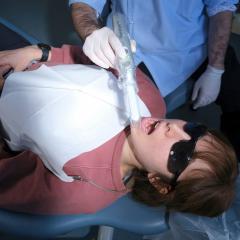
Being struck by Cupid’s arrow can be good for your teeth.
According to University of Queensland researcher Grace Branjerdporn, finding a soul mate puts a smile on your face in more ways than one.
“We studied how the dynamics of our romantic relationships affect our oral health,” Ms Branjerdporn said.
“We determined that those who tended to avoid emotional intimacy, or worried their partner would not be available to them in times of need, were more likely to have negative oral health outcomes.
“They were more likely to skip dental check-ups for preventative reasons, be overly self-conscious about how their teeth looked, and say their oral health was poorer.
“On the flipside, you could say having a love life where you trust the other person and have higher self-worth leads to better dental visiting habits, more confidence related to your teeth and appearance, and rating your teeth better.”
The study was a collaboration between UQ School of Health and Rehabilitation Sciences, and the School of Dentistry, co-authored with Dr Pamela Meredith, Emeritus Professor Jenny Strong and Professor Pauline Ford.
It builds on previous research concerning adult attachment theory and the negative health impacts of attachment insecurity in adult relationships.
“Those who try to emotionally distance themselves from their significant other may be reluctant to schedule regular preventative dental appointments as they have higher levels of self-reliance, distrust of others and avoid seeking support,” Ms Branjerdporn said.
“An emerging body of medical literature reveals links between insecure attachment and decreased healthcare-seeking.”
This is the first study to assess associations between patterns of attachment anxiety and attachment avoidance, oral health habits and self-rated oral health with a group of healthy people.
And in a roundabout way, the findings could provide a way to proactively support people at risk of poor oral health by more readily identifying them.
A total of 265 adults were observed in the research, published in the journal Quality of Life Research.
Media: Grace Branjerdporn, grace.branjerdporn@uqconnect.edu.au , +61 408 141 234; UQ Communications – Robert Burgin, r.burgin@uq.edu.au, +61 7 3346 3035, +61 448 410 364.


